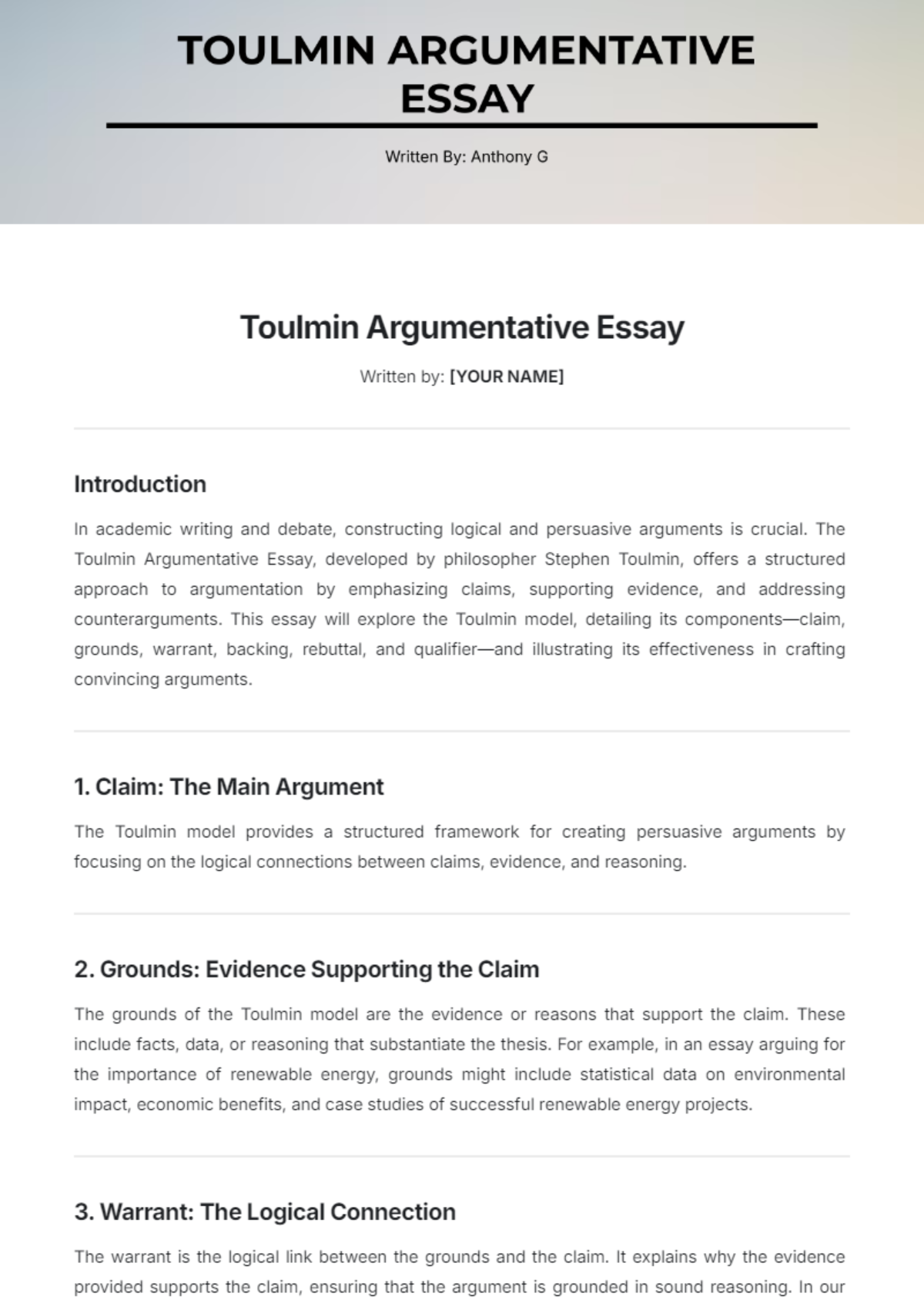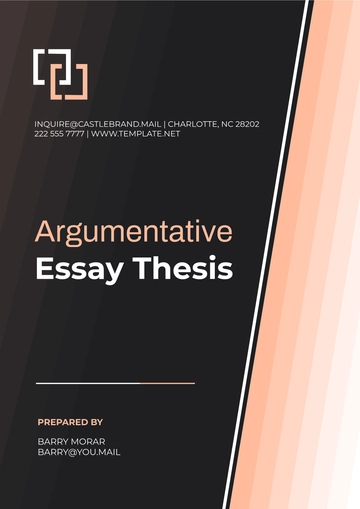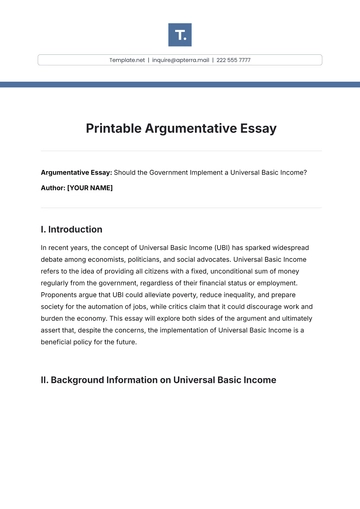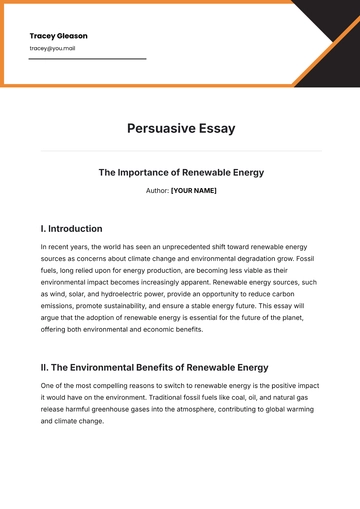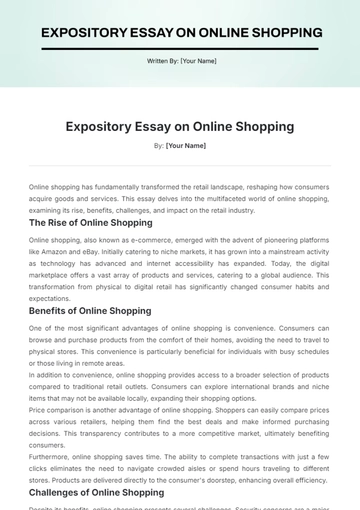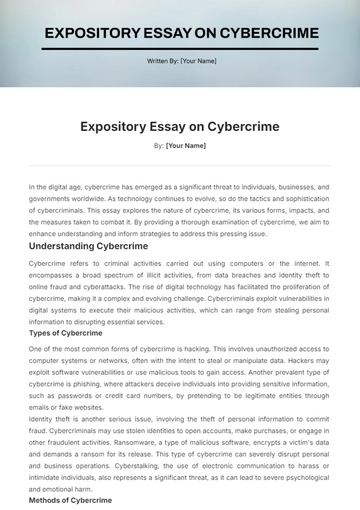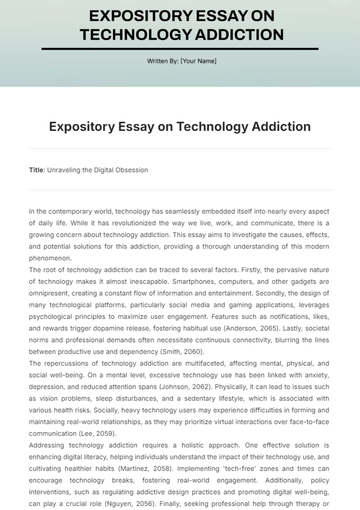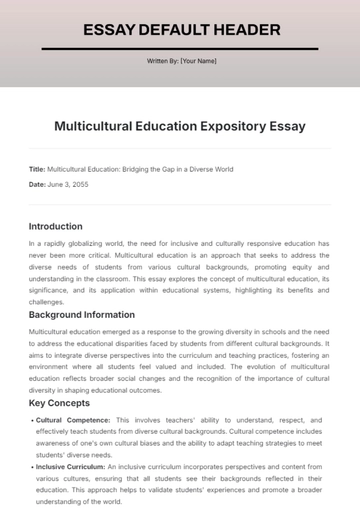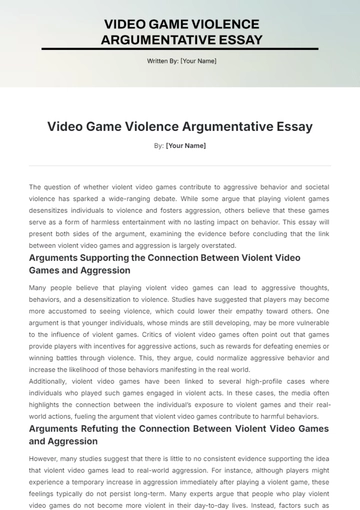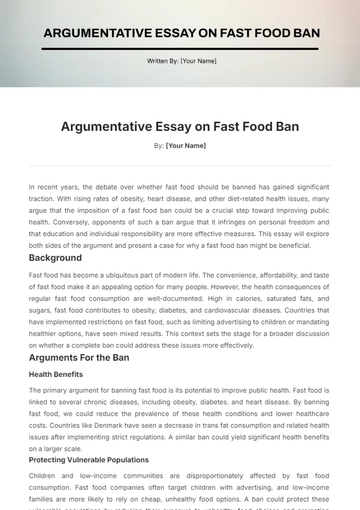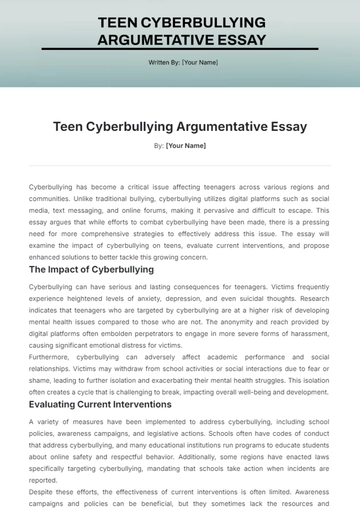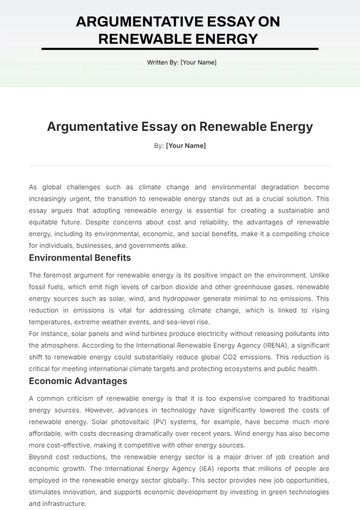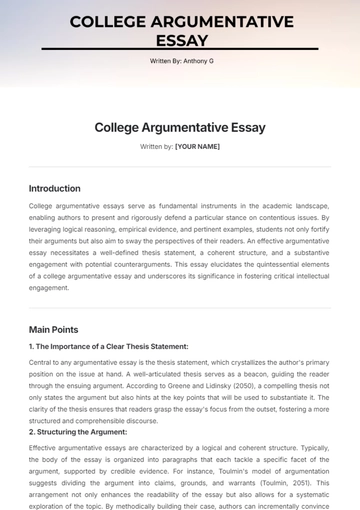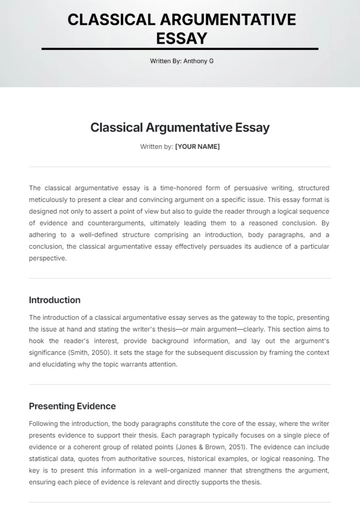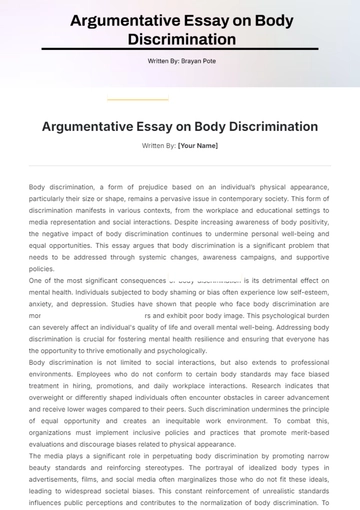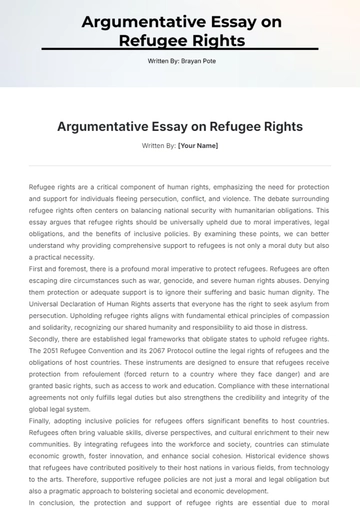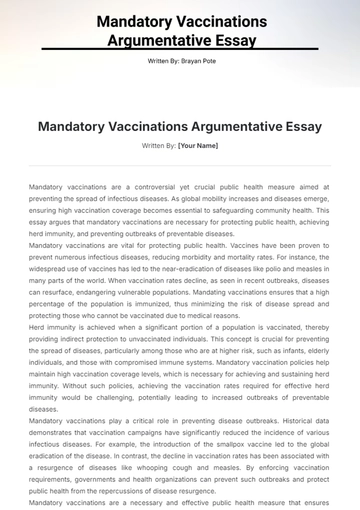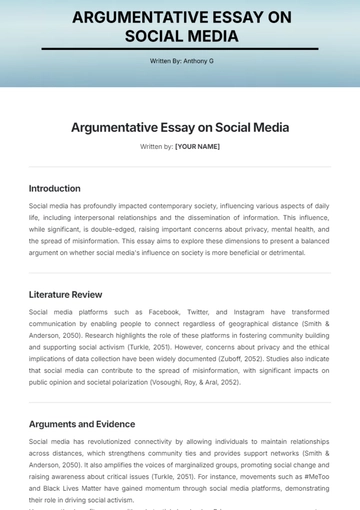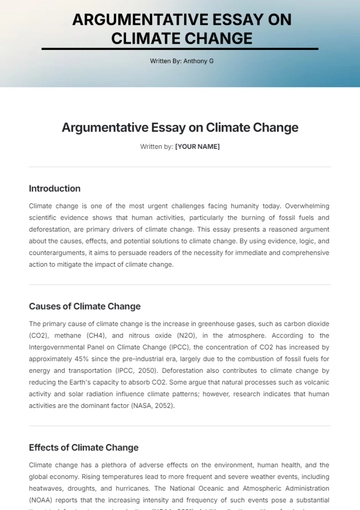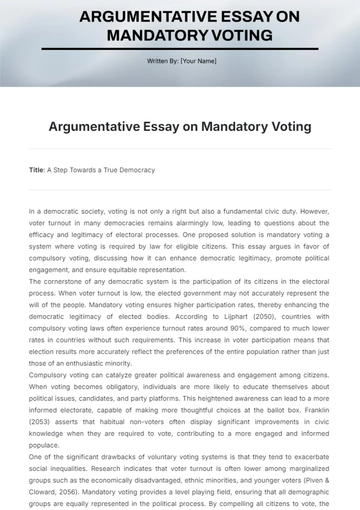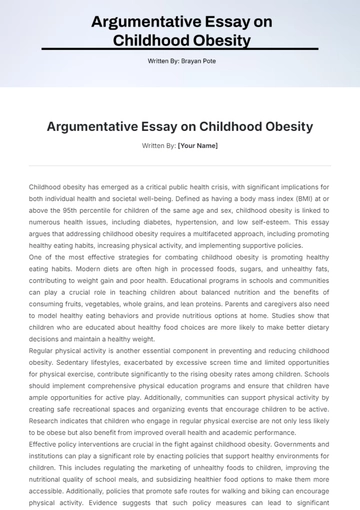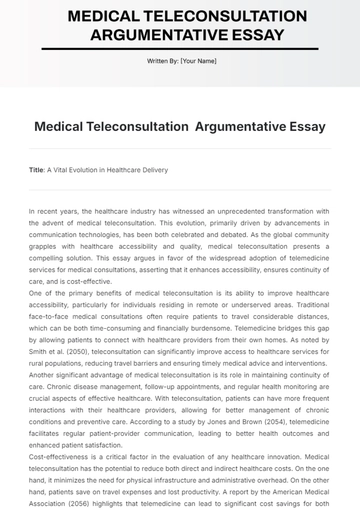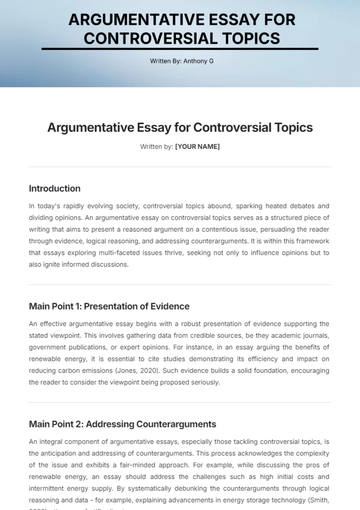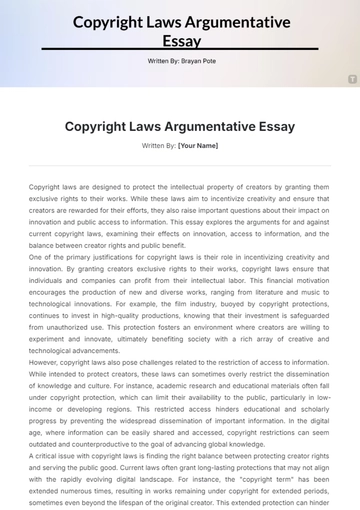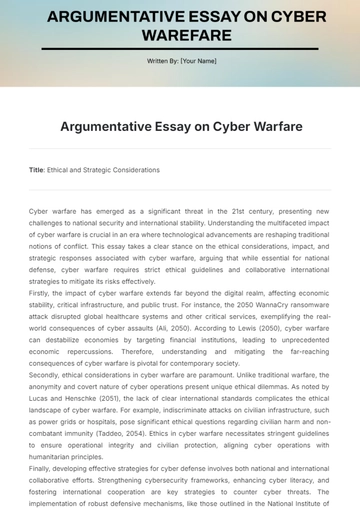Toulmin Argumentative Essay
Written by: [YOUR NAME]
Introduction
In academic writing and debate, constructing logical and persuasive arguments is crucial. The Toulmin Argumentative Essay, developed by philosopher Stephen Toulmin, offers a structured approach to argumentation by emphasizing claims, supporting evidence, and addressing counterarguments. This essay will explore the Toulmin model, detailing its components—claim, grounds, warrant, backing, rebuttal, and qualifier—and illustrating its effectiveness in crafting convincing arguments.
1. Claim: The Main Argument
The Toulmin model provides a structured framework for creating persuasive arguments by focusing on the logical connections between claims, evidence, and reasoning.
2. Grounds: Evidence Supporting the Claim
The grounds of the Toulmin model are the evidence or reasons that support the claim. These include facts, data, or reasoning that substantiate the thesis. For example, in an essay arguing for the importance of renewable energy, grounds might include statistical data on environmental impact, economic benefits, and case studies of successful renewable energy projects.
3. Warrant: The Logical Connection
The warrant is the logical link between the grounds and the claim. It explains why the evidence provided supports the claim, ensuring that the argument is grounded in sound reasoning. In our renewable energy example, the warrant would demonstrate how the statistical data and case studies logically lead to the conclusion that renewable energy is essential for sustainable development.
4. Backing: Additional Support
Backing provides further support for the warrant by offering additional evidence or reasoning that reinforces the connection between the grounds and the claim. For instance, backing might include expert opinions, historical examples, or theoretical frameworks that strengthen the argument about renewable energy’s importance.
5. Rebuttal: Counterarguments
Rebuttals address counterarguments or exceptions to the claim, showcasing the writer’s consideration of alternative perspectives. In the context of renewable energy, a rebuttal might address potential counterarguments such as the high initial costs or the intermittency of renewable energy sources, and respond to these concerns.
6. Qualifier: Statements on Strength or Scope
The qualifier indicates the strength or scope of the claim, using terms such as “usually,” “likely,” or “in most cases.” For the renewable energy argument, a qualifier might state that “renewable energy is likely the most viable solution for sustainable development, given current technological and economic trends.”
Conclusion
In conclusion, the Toulmin Argumentative Essay is a structured approach to argumentation that emphasizes logical connections between claims, evidence, and reasoning. By incorporating elements such as grounds, warrants, backing, rebuttals, and qualifiers, the Toulmin model provides a comprehensive framework for constructing persuasive and well-supported arguments. This model's thoroughness ensures that arguments are grounded in logic and evidence, making it a valuable tool for academic writing and beyond.
Bibliography
Toulmin, S. (2050). The Uses of Argument. Cambridge University Press.
Smith, J. (2051). Understanding Argumentation: An Introduction to the Toulmin Model. Oxford University Press.
Johnson, R. H., & Blair, J. A. (2052). Logical Self-Defense: A Guide to Understanding and Constructing Arguments. McGraw-Hill.
Essay Templates @ Template.net
